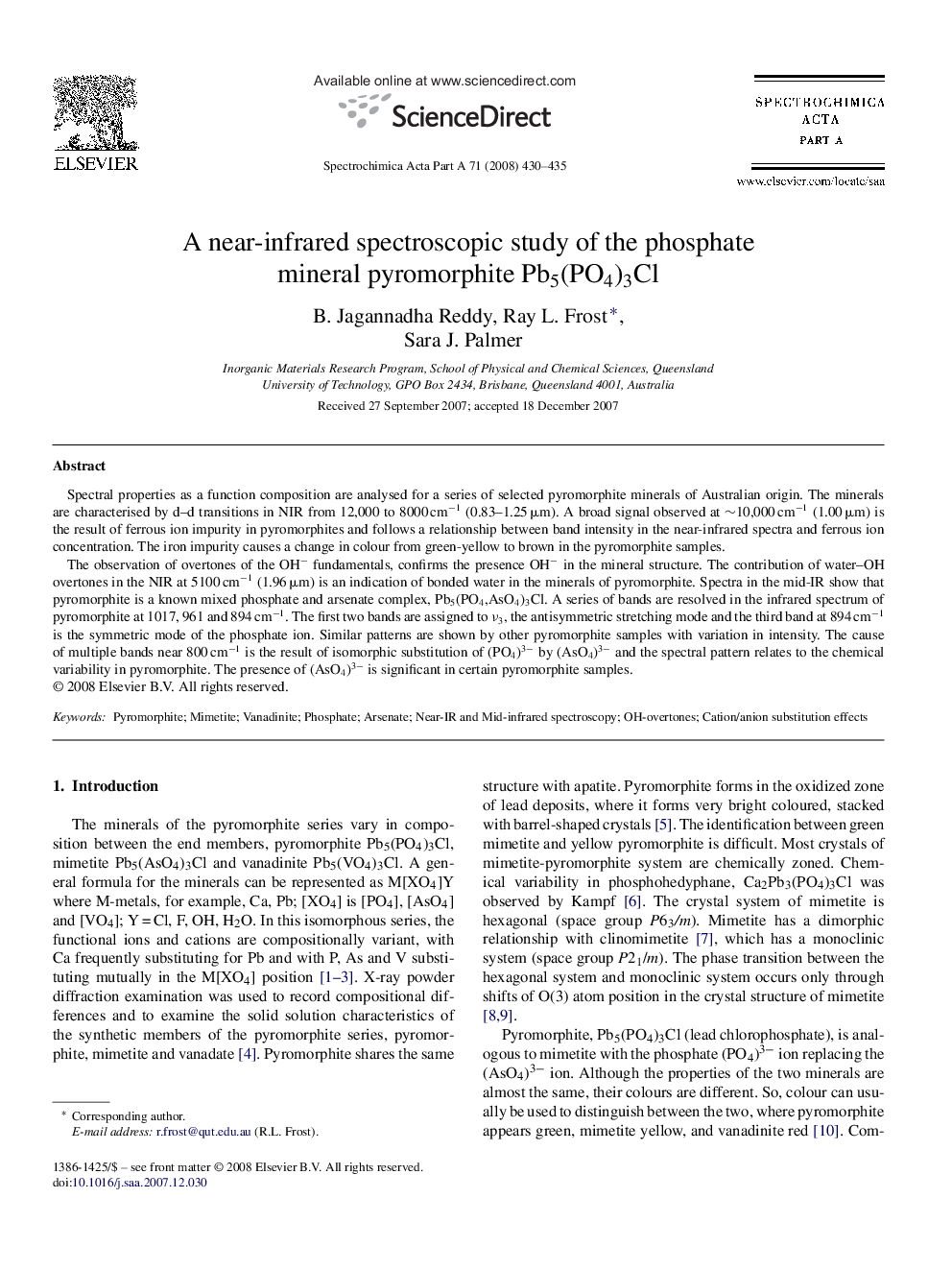| Article ID | Journal | Published Year | Pages | File Type |
|---|---|---|---|---|
| 1238130 | Spectrochimica Acta Part A: Molecular and Biomolecular Spectroscopy | 2008 | 6 Pages |
Spectral properties as a function composition are analysed for a series of selected pyromorphite minerals of Australian origin. The minerals are characterised by d–d transitions in NIR from 12,000 to 8000 cm−1 (0.83–1.25 μm). A broad signal observed at ∼10,000 cm−1 (1.00 μm) is the result of ferrous ion impurity in pyromorphites and follows a relationship between band intensity in the near-infrared spectra and ferrous ion concentration. The iron impurity causes a change in colour from green-yellow to brown in the pyromorphite samples.The observation of overtones of the OH− fundamentals, confirms the presence OH− in the mineral structure. The contribution of water–OH overtones in the NIR at 5100 cm−1 (1.96 μm) is an indication of bonded water in the minerals of pyromorphite. Spectra in the mid-IR show that pyromorphite is a known mixed phosphate and arsenate complex, Pb5(PO4,AsO4)3Cl. A series of bands are resolved in the infrared spectrum of pyromorphite at 1017, 961 and 894 cm−1. The first two bands are assigned to ν3, the antisymmetric stretching mode and the third band at 894 cm−1 is the symmetric mode of the phosphate ion. Similar patterns are shown by other pyromorphite samples with variation in intensity. The cause of multiple bands near 800 cm−1 is the result of isomorphic substitution of (PO4)3− by (AsO4)3− and the spectral pattern relates to the chemical variability in pyromorphite. The presence of (AsO4)3− is significant in certain pyromorphite samples.
